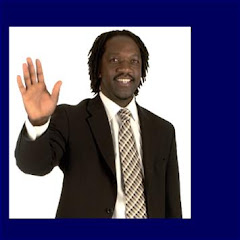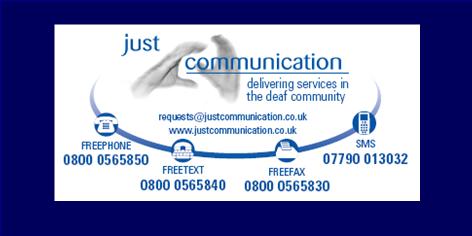Getting heard isn’t easy when you’re deaf writes Brent Wittmeier for the Edmonton Journal (20/02/12).
Changing a doctor’s appointment, ordering pizza, dialing 911: all are next to impossible without hearing. But Edmonton’s deaf community hopes Canada’s telecommunications regulator will change that.
Linda Cundy provides a concise summary of the debate over mandating the national adoption of a Video Relay Service — an interpreter and webcam phone system — after an 18-month trial for approximately 300 Alberta and British Columbia households ended last month, at a cost of over $3.2 million.
“(From) their perspective (the phone industry’s), it’s a financial hardship,” said Cundy, through interpreter Tiffany Goodkey. ”Our issue is accessibility.”
When she’s not consulting on behalf of deaf and hard of hearing students for Edmonton Public Schools, Cundy is secretary for the Alberta Association for the Deaf. And despite having never heard her own voice, she’s downright vocal when it comes to the Video Relay System.
Speak with Cundy and you’ll only hear taps and thumps, whispers and punctuations of her breath. But Cundy’s hands and face reveal a world of words, visual vocabulary summoned to combat the “oppression” experienced by Canadians who can’t hear.
There are no hard statistics for how many deaf Canadians are out there. The Canadian Association of the Deaf estimates one in ten have hearing loss. One-tenth of those people, or one per cent of the population, are estimated to be deaf. Based on figures from the 2011 census, that’s roughly 36,000 deaf Albertans.
“We can never win the number game,” Cundy said. “But our needs are extremely high. We don’t fit into the disabilities group, we don’t fit into the literacy and language minority group.”
The piloted video system allows deaf people access to real-time phone conversations via a webcam and monitor interface supplied by Utah-based Sorenson Communications. American Sign Language interpreters mediate phone calls: the deaf person uses video to communicate, the hearer relies on a regular headset. The technology has been available to deaf Americans since 2002.
Without the video system, deaf Canadians either have to rely on email and texting, or older and slower text-based phone technologies. At her home in Edmonton’s southern community of Magrath, Cundy demonstrates the process on a TTY teletype device — a phone-based contraption used since the ‘70s — as well as the modern, desktop computer equivalent, IP Relay. Both technologies require a keyboard, as well as an operator on the line to relay typed responses. It’s slower and often disjointed. And if all the operators are busy, conversations simply can’t happen.
Having lost access to the Video Relay System with the end of the pilot project, Cundy talks about problems with her IP Relay when she called a Chicago hotel to change a reservation.
“It was just left ringing for half an hour,” Cundy said. “There’s no way of communicating whether or not the operator’s not there. Are they closed, are they busy, is nobody available? It’s a small barrier, but a barrier nonetheless.”
The evolution of video and phone technology — and arguments for its regulation in Canada — has gone on for nearly a decade. Even before the Canadian Radio-television and Telecommunications Commission finally approved a trial in 2008, many deaf Canadians had already acquired the necessary equipment for calls south of the border. Cundy said some deaf Canadians even found ways to illegally access American call centres for domestic calls.
In 2003, Telus expressed openness to forays from the Alberta Association of the Deaf. But with a labour disruption and management changes, talks never progressed. The next year, the Canadian Association for the Deaf began fighting for the video technology at the national, regulatory level.
In 2008, the CRTC finally approved a trial of the Video Relay System, paid through deferral funds, which is money generated early in the decade from artificially high telecommunications prices mandated to encourage competition. Most of the $650-million surplus was later rebated or used to provide broadband to rural Canada, but a small percentage was set aside for future accessibility projects.
Beginning in July 2010, Telus offered the system to 311 households in Alberta and B.C., employing 150 sign-language interpreters at a cost of $2.03 million in deferral funds. A similar trial was offered by Bell Canada in Ontario and Quebec. The CRTC later allowed Telus to draw another $1.2 million — nearly half of its remaining deferral funds — to extend the trial an extra six months, ending Jan. 15.
Data, interviews and surveys from the trial are being compiled into reports to be submitted at the end of February. The CRTC has said it will make a decision about the feasibility of a national service next year.
Since January, the Canadian Association for the Deaf has gone into high gear defending and promoting the technology, launching an online petition and meeting with federal Conservative, Liberal, and NDP representatives to defend the system. Deaf organizations have encouraged letter writing to local politicians and rallies in support. At a January rally at Calgary’s CRTC office, 150 participants showed up. Another 100 showed up early February at a town hall meeting in a west Edmonton hotel. But Cundy said it takes extra effort, and hired translators, to get their message out.
Although some argue that existing IP Relay technology is sufficient, Cundy’s plea for the technology is linguistic. She refers to herself as bilingual — American Sign Language is her first language, English her second — and talks about the “long, long, drawn out history” of deaf people not given full access to the visual communication that allows their entry into language. But sign language has its own grammar, syntax and regional dialects; few deaf people can easily translate its visual ideas into English without loss of flow and sense.
“I’m comfortable in English and I’m comfortable in sign language, but not many deaf people are fluently bilingual,” Cundy said. “If you’re fluent in Spanish and forced to try to communicate in English, that’s not going to be successful. I’m fluent in ASL, but forced to type in English.”
Problems with text-based technology get amplified with other complications. Cundy is on a committee for deaf Albertan seniors in nursing homes, where Alzheimer’s and arthritis compound hearing problems to make communication even harder. After a lifetime of being left out of the conversation, Cundy says the video technology can open up a world of language for those people.
“We’re extremely advanced at this point,” Cundy said. “With all the advanced technology, we should be able to include and incorporate deaf people.”
Monday, 20 February 2012
Subscribe to:
Post Comments (Atom)






No comments:
Post a Comment